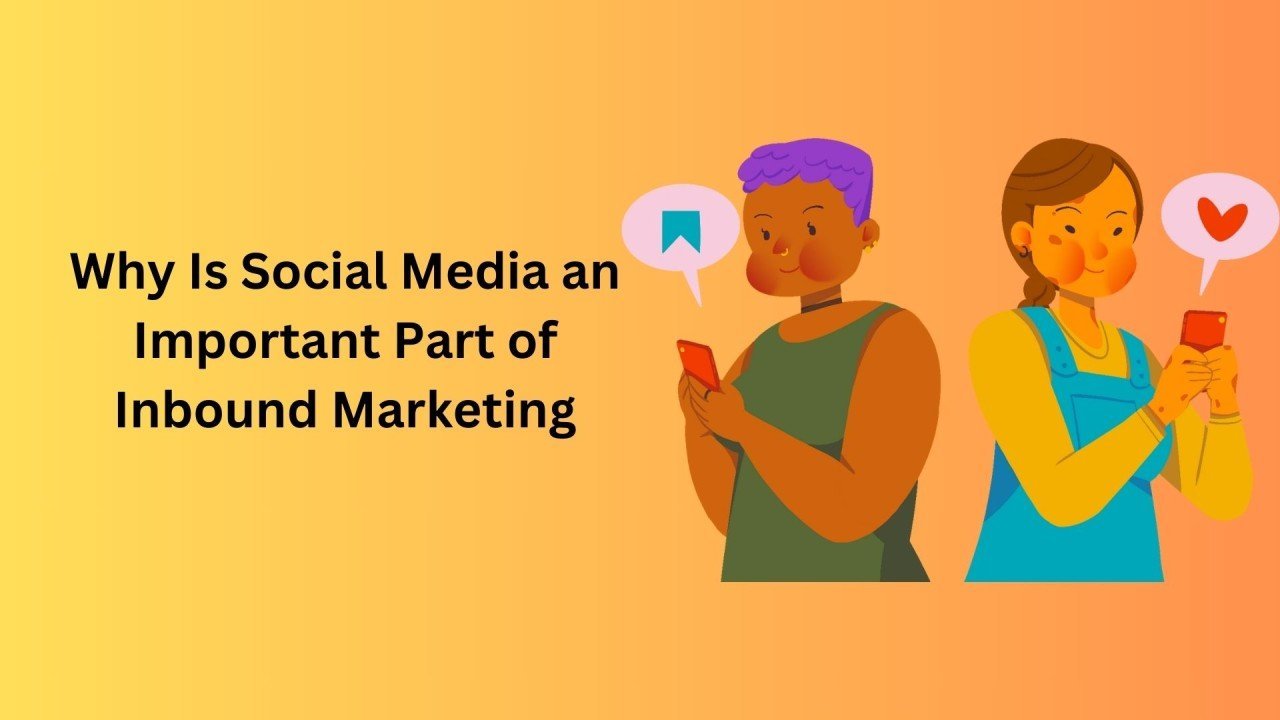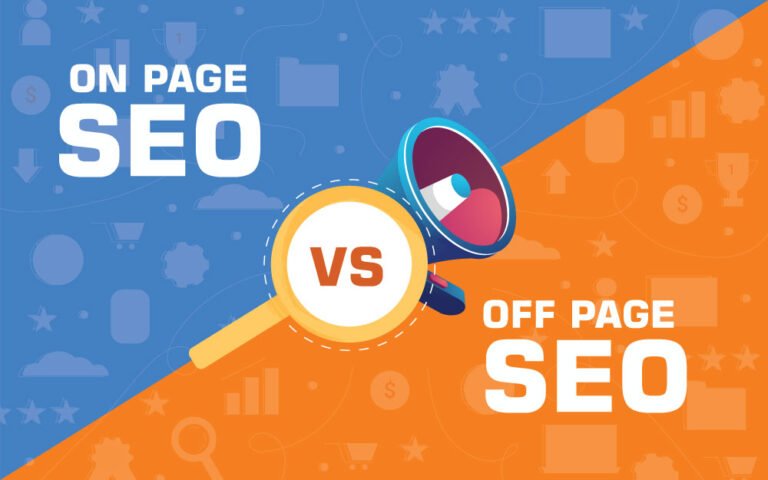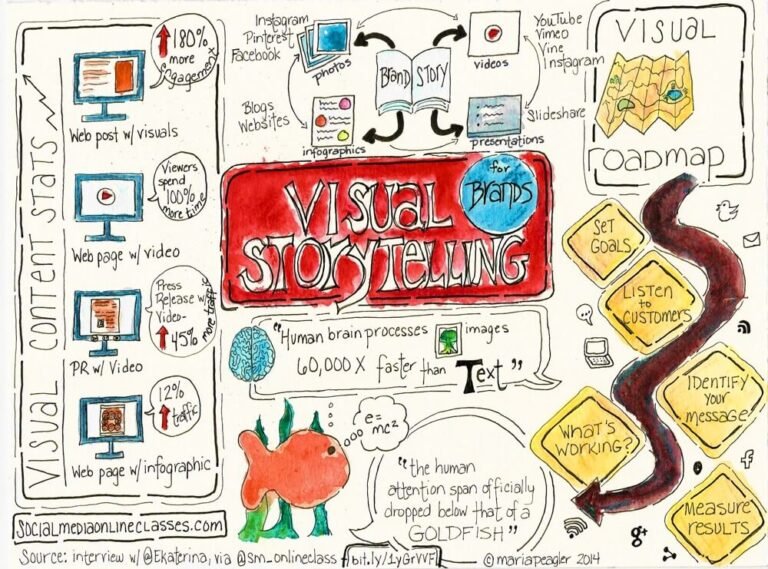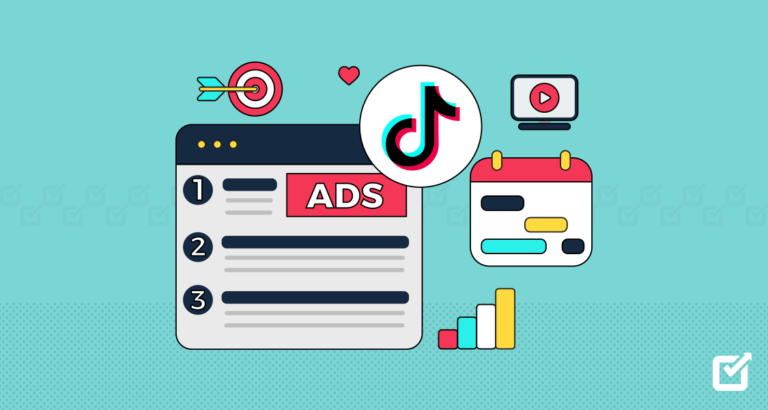Why is Social Media an Important Part of Inbound Marketing?
In the ever-evolving landscape of digital marketing, inbound marketing has emerged as a key strategy for attracting and engaging potential customers. Unlike traditional outbound marketing methods, which rely on pushing messages out to a broad audience, inbound marketing focuses on drawing in customers through valuable content and interactions. At the heart of this strategy lies social media, a powerful tool that has transformed the way businesses connect with their audience.
s like Facebook, Twitter, Instagram, LinkedIn, and TikTok have become integral to our daily lives. They offer businesses unprecedented access to a vast and diverse audience, providing opportunities to engage with potential customers in meaningful ways. But why is social media an important part of inbound marketing? Let’s dive in and explore the essential role social media plays in driving inbound marketing success.
Social media is more than just a place for sharing photos and updates; it’s a dynamic ecosystem where brands can build their identity, share valuable content, and foster genuine relationships with their audience. By leveraging the power of social media, businesses can enhance brand awareness, drive traffic to their websites, and cultivate a loyal community of followers. This, in turn, fuels the inbound marketing engine, helping businesses attract, convert, close, and delight customers in a natural and effective manner.
In the following sections, we’ll delve deeper into the specific ways social media enhances inbound marketing, discuss key strategies for success, and examine real-world examples of brands that have harnessed the power of social media to achieve remarkable results.
What is Inbound Marketing?
Inbound marketing is a strategic approach focused on attracting customers by creating valuable content and experiences tailored to them. Unlike outbound marketing, which interrupts your audience with content they don’t always want, inbound marketing forms connections they’re looking for and solves problems they already have. It’s about drawing customers in rather than pushing your product or service onto them.
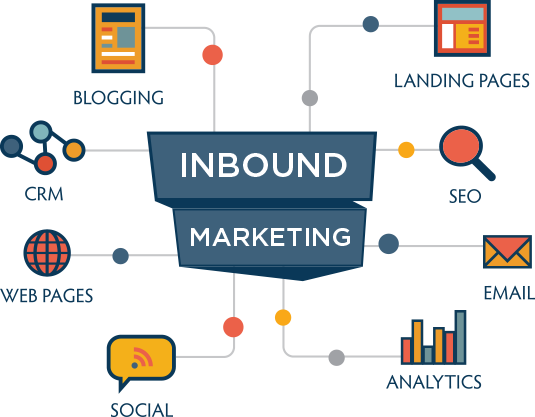
Key Principles of Inbound Marketing
- Attract: The first step is to attract the right audience with valuable content and conversations that establish you as a trusted advisor. This is achieved through:
- Content Creation: Developing informative and engaging content like blog posts, videos, infographics, and eBooks that address the needs and pain points of your target audience.
- SEO (Search Engine Optimization): Optimizing your content to rank higher in search engine results, making it easier for your audience to find you.
- Social Media Marketing: Sharing your content on social media platforms to reach a broader audience and drive traffic to your website.
- Engage: Once you have attracted visitors to your website or social media channels, the next step is to engage them with content and interactions that build trust and relationships. Key strategies include:
- Email Marketing: Sending personalized and relevant emails that nurture leads through the buying process.
- Lead Nurturing: Providing targeted content and offers that guide potential customers through their journey and keep them engaged.
- Convert: This phase is about converting your engaged audience into leads and customers. Tactics involve:
- Landing Pages and Calls-to-Action (CTAs): Creating compelling landing pages and CTAs that encourage visitors to take action, such as filling out a form or downloading a resource.
- Forms and Lead Capture: Collecting information from your visitors through forms that allow you to understand their needs and follow up accordingly.
- Delight: The final step is to delight your customers by providing exceptional experiences that turn them into promoters of your brand. This includes:
- Customer Support: Offering timely and helpful support to address customer issues and inquiries.
- Feedback and Surveys: Gathering feedback to understand customer satisfaction and identify areas for improvement.
- Loyalty Programs: Creating programs that reward loyal customers and encourage repeat business.
Strategies for Effective Inbound Marketing
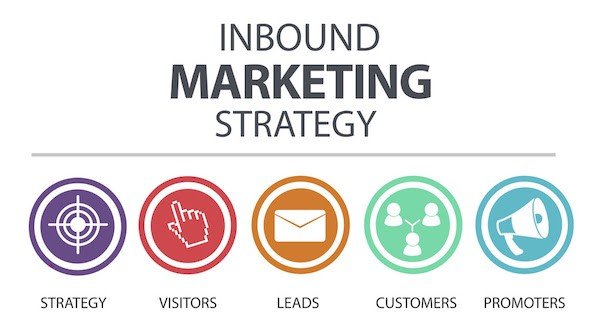
- Content Marketing: Producing high-quality content that addresses the needs and interests of your target audience. This can include blog posts, videos, podcasts, webinars, and more.
- SEO: Ensuring your content is optimized for search engines to improve visibility and attract organic traffic. This involves keyword research, on-page optimization, and building high-quality backlinks.
- Social Media Engagement: Actively engaging with your audience on social media platforms by sharing content, responding to comments, and participating in conversations. This helps build a community around your brand and drives traffic to your website.
- Personalization: Tailoring your marketing efforts to the individual needs and preferences of your audience. This can be achieved through personalized email campaigns, targeted content recommendations, and customized offers.
- Analytics and Optimization: Continuously analyzing your marketing performance and making data-driven decisions to improve your strategies. This involves tracking key metrics, testing different approaches, and refining your tactics based on what works best.
Inbound marketing is all about creating a holistic experience for your audience, guiding them through a seamless journey from awareness to loyalty. By focusing on providing value and building relationships, businesses can attract, engage, and delight customers in a way that feels natural and meaningful.
Social Media’s Connection to Inbound Marketing
How Social Media Integrates with Inbound Marketing Strategies
Social media is not just an optional add-on; it’s a fundamental component of a successful inbound marketing strategy. By integrating social media with inbound marketing, businesses can amplify their reach, engage with their audience more effectively, and create a cohesive brand experience. Here’s how social media seamlessly integrates and market your business with the core principles and strategies of inbound marketing:
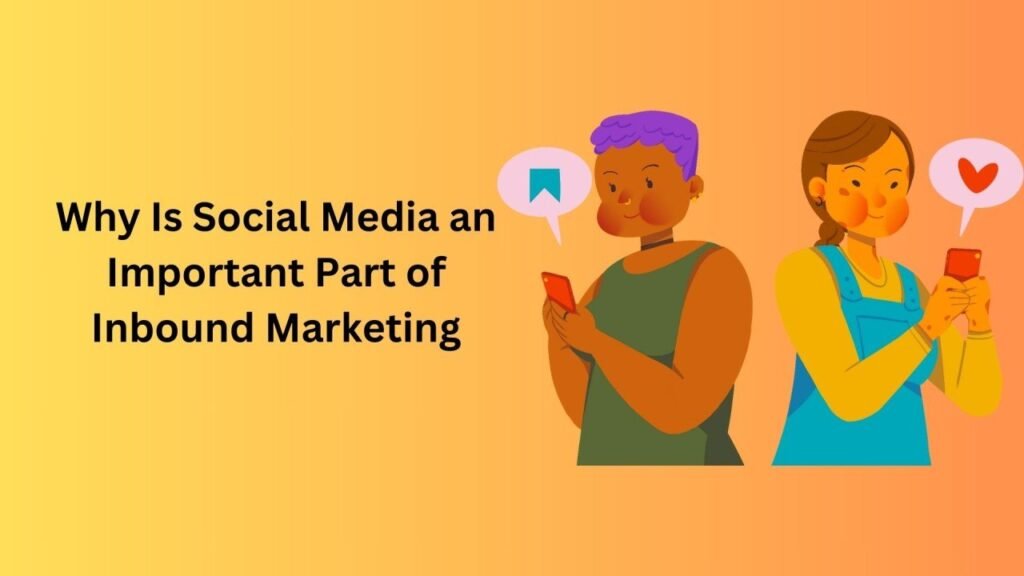
1. Enhancing Brand Awareness
- Attracting the Right Audience: Social media platforms like Facebook, Instagram, Twitter, LinkedIn, and TikTok are powerful tools for increasing brand visibility. By sharing high-quality, relevant content on these platforms, businesses can attract the right audience who are genuinely interested in their products or services. Effective use of hashtags, trending topics, and engaging visuals can help expand reach and bring more traffic to your website.
- Creating Shareable Content: Content that resonates with your audience gets shared, and social media is the perfect place for content to go viral. When users share your content, it introduces your brand to their network, exponentially increasing your reach and potential customer base.
2. Driving Traffic to Your Website
- Content Distribution: Social media acts as a distribution channel for your content. Every blog post, video, infographic, or eBook you create can be shared on social media to drive traffic back to your website. This not only boosts your website’s visibility but also improves its SEO ranking through increased traffic and backlinks.
- Promoting Offers and Landing Pages: Sharing links to landing pages, special offers, and lead magnets on social media can drive targeted traffic to your site. By creating compelling calls-to-action (CTAs) and promoting them through social media, you can convert social media followers into website visitors and leads.
3. Building Relationships and Community
- Engaging with Your Audience: Social media provides a unique opportunity to interact directly with your audience. Responding to comments, answering questions, and engaging in conversations helps build trust and loyalty. It humanizes your brand and makes customers feel valued and heard.
- User-Generated Content: Encouraging your followers to create and share content related to your brand can foster a sense of community. User-generated content (UGC) not only provides authentic social proof but also enhances engagement and strengthens your relationship with your audience.
4. Utilizing Social Media Analytics
- Measuring Performance: Social media platforms offer robust analytics tools that provide insights into the performance of your content and campaigns. Metrics such as engagement rates, click-through rates (CTR), and conversions help you understand what resonates with your audience and where to optimize your strategy.
- Refining Strategies: By analyzing social media data, businesses can refine their inbound marketing strategies. Identifying the types of content that perform best, the times when your audience is most active, and the demographics of your followers can inform more effective content creation and distribution.
5. Supporting SEO Efforts
- Boosting Content Reach: Social media signals, such as likes, shares, and comments, can indirectly influence your SEO efforts. Increased engagement on social media can lead to more inbound links and higher visibility in search engine results.
- Enhancing Local SEO: For businesses with a local presence, social media profiles and posts can improve local SEO. Consistent NAP (Name, Address, Phone number) information and engagement with local communities on platforms like Facebook and Google My Business can boost local search rankings.
Social media is a powerful ally in the inbound marketing arsenal. By leveraging its capabilities to attract, engage, convert, and delight customers, businesses can create a holistic marketing strategy that drives sustainable growth. Integrating social media with inbound marketing not only enhances your reach but also fosters deeper connections with your audience, leading to long-term success.
Benefits of Social Media for Inbound Marketing
Social media’s integration into inbound marketing is not just a trend; it’s a necessity for any business aiming to thrive in the digital age. Here are the key benefits and reasons why social media is crucial for inbound marketing:
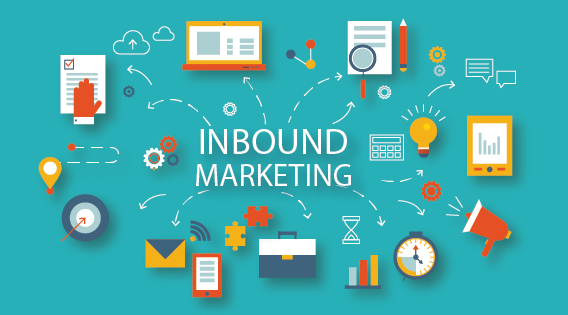
- Amplified Reach and Visibility:
- Expanding Audience Base: Social media platforms have billions of users, allowing businesses to reach a broader audience.
- Enhanced Content Distribution: Sharing content on social media amplifies its reach, driving more traffic to your website.
- Improved Customer Engagement and Interaction:
- Direct Communication Channel: Social media enables real-time, two-way communication with customers, fostering trust and loyalty.
- Community Building: Engaging with followers and encouraging user-generated content helps build a loyal community around your brand.
- Cost-Effective Marketing:
- Affordable Advertising Options: Social media advertising is cost-effective and allows for targeted campaigns, increasing ROI.
- Organic Reach: Consistently sharing high-quality content can attract an audience organically, without heavy spending.
- Enhanced Brand Authority and Credibility:
- Thought Leadership: Sharing valuable content positions your business as an industry expert.
- Customer Reviews and Testimonials: Positive social media reviews boost credibility and attract more customers.
- Insightful Analytics and Data:
- Performance Tracking: Social media platforms provide detailed analytics to track content and campaign performance, helping refine strategies for better results.
1. Builds Brand Awareness
How Social Media Helps in Building Brand Awareness: Social media platforms are unparalleled in their ability to reach large audiences quickly. By consistently posting engaging content, participating in conversations, and using targeted advertising, businesses can significantly increase their visibility. Features like hashtags and trending topics further enhance reach, allowing brands to connect with potential customers who may not have discovered them otherwise. This increased visibility translates to higher brand recognition and awareness.

2. Engages Target Audiences
Ways Social Media Enables Engagement with Target Audiences: Social media fosters direct and immediate communication with your audience. Businesses can interact with followers through comments, direct messages, polls, and live videos, creating a more personalized and engaging experience. This interaction not only builds relationships but also provides real-time feedback, helping businesses understand their audience’s preferences and needs better.

3. Enhances SEO
The Impact of Social Media on Search Engine Optimization: While social media signals (likes, shares, comments) are not direct ranking factors for SEO, they play a significant role in content distribution, which indirectly boosts SEO. High engagement on social media can lead to increased website traffic and more inbound links, both of which are critical for improving search engine rankings. Additionally, social media profiles themselves often rank in search engines, providing another avenue for potential customers to find your brand.

4. Generates Leads
How Social Media Facilitates Lead Generation: Social media platforms offer numerous tools for lead generation, such as lead ads on Facebook and Instagram, or LinkedIn’s Lead Gen Forms. By sharing valuable content, offering free resources, and running targeted ad campaigns, businesses can attract potential customers and capture their information. Engaging with users and responding to their inquiries promptly also helps in nurturing these leads into conversions.

5. Provides Audience Insights
Gaining Insights into Audience Behavior and Preferences Through Social Media: Social media analytics tools offer detailed insights into audience behavior, demographics, and preferences. By analyzing metrics like engagement rates, shares, and comments, businesses can understand what type of content resonates most with their audience. This data is invaluable for refining marketing strategies, developing new products, and tailoring content to meet audience needs.

6. Supports Content Distribution
Role of Social Media in Distributing and Amplifying Content: Social media acts as a powerful distribution channel for content. Whether it’s blog posts, videos, infographics, or eBooks, sharing this content on social platforms can significantly extend its reach. This amplification not only drives traffic to your website but also enhances content visibility and engagement, making it more likely to be shared further.

7. Influences User-Generated Content
Encouraging and Leveraging User-Generated Content: User-generated content (UGC) is a valuable asset for any brand. Encouraging customers to share their experiences, reviews, and testimonials on social media creates authentic and relatable content. UGC serves as social proof, enhancing credibility and trust in your brand. Running contests, featuring customer stories, and creating branded hashtags are effective ways to generate UGC.

8. Offers High ROI
Social Media’s Cost-Effectiveness and Return on Investment: Compared to traditional advertising methods, social media marketing is highly cost-effective. Platforms like Facebook, Instagram, and Twitter offer advanced targeting options, ensuring that your ads reach the right audience. The ability to track and measure performance in real-time allows for continuous optimization, leading to a higher return on investment. Even with a modest budget, businesses can achieve significant results through strategic social media marketing.

Practical Tips for Overcoming Social Media Challenges in Inbound Marketing
Managing social media for inbound marketing can come with its own set of challenges. Here are some practical tips to help you overcome these common obstacles:

Managing Multiple Accounts
Strategies for Managing Multiple Social Media Accounts Efficiently:
- Use Social Media Management Tools: Platforms like Hootsuite, Buffer, and Sprout Social allow you to manage multiple accounts from a single dashboard. You can schedule posts, monitor engagement, and analyze performance across different channels.
- Create a Social Media Calendar: Plan and schedule your posts in advance to ensure consistent and timely content across all platforms. This helps in maintaining a regular posting schedule and reduces last-minute scrambling.
- Delegate Responsibilities: If you have a team, assign specific accounts or tasks to different team members. This division of labor ensures that each account gets the attention it needs without overwhelming any single person.
- Automate Where Possible: Use automation tools for routine tasks like posting updates, but always monitor interactions personally to maintain a human touch.
Creating Consistent Content
Importance of Consistency in Social Media Content:
- Develop a Content Strategy: Define your content pillars—key themes and topics relevant to your audience. This helps maintain a consistent voice and message across all posts.
- Maintain a Content Calendar: Consistency is key in social media. A content calendar helps you plan your posts in advance, ensuring that you have a steady stream of content ready to go.
- Batch Create Content: Set aside specific times to create multiple pieces of content in one go. This not only saves time but also ensures that you have a backlog of content ready for posting.
- Repurpose Content: Don’t hesitate to repurpose existing content into different formats. A blog post can be turned into an infographic, a video, or a series of social media updates, providing more content with less effort.
Engaging with Followers
Best Practices for Engaging with Social Media Followers:
- Respond Promptly: Aim to respond to comments, messages, and mentions as quickly as possible. Prompt responses show that you value your followers’ input and are attentive to their needs.
- Ask Questions: Encourage interaction by asking open-ended questions in your posts. This invites your followers to share their opinions and experiences, boosting engagement.
- Show Appreciation: Regularly thank your followers for their support and interaction. A simple acknowledgment can go a long way in building strong relationships.
- Host Interactive Sessions: Live Q&A sessions, polls, and contests are excellent ways to engage with your audience in real-time. These activities make your followers feel involved and valued.
- Share User-Generated Content: Feature content created by your followers on your page. This not only provides you with authentic content but also strengthens the community around your brand.
By implementing these strategies, you can effectively manage multiple accounts, maintain consistent content, and engage meaningfully with your audience, thereby overcoming common social media challenges and enhancing your inbound marketing efforts.
Conclusion
Summarizing the Key Points and the Importance of Social Media in Inbound Marketing
Social media is an indispensable part of inbound marketing, providing a powerful platform for businesses to attract, engage, and convert their target audience. By integrating social media with inbound marketing strategies, businesses can amplify their reach, build stronger relationships, and achieve higher ROI. Here’s a recap of the main points discussed in the article and some actionable steps to help you implement social media strategies effectively.
Recap of Key Points
- Builds Brand Awareness: Social media platforms increase brand visibility and recognition by reaching a broader audience.
- Engages Target Audiences: Direct and immediate interaction with your audience fosters trust and loyalty.
- Enhances SEO: Social media indirectly boosts SEO by driving traffic and increasing inbound links.
- Generates Leads: Social media tools and targeted campaigns facilitate effective lead generation.
- Provides Audience Insights: Analytics tools offer valuable insights into audience behavior and preferences.
- Supports Content Distribution: Social media amplifies content reach, driving traffic to your website.
- Influences User-Generated Content: Encouraging UGC builds authenticity and trust.
- Offers High ROI: Social media marketing is cost-effective and provides measurable results.
Next Steps for Implementing Social Media Strategies
- Define Your Goals: Identify what you aim to achieve with social media—brand awareness, lead generation, customer engagement, etc.
- Choose the Right Platforms: Focus on the social media platforms that best align with your target audience.
- Develop a Content Strategy: Plan and create content that is relevant and valuable to your audience.
- Create a Posting Schedule: Use a content calendar to maintain consistency in your posts.
- Engage with Your Audience: Actively respond to comments, messages, and engage in conversations.
- Monitor and Analyze Performance: Use social media analytics to track your performance and refine your strategies.
FAQs
General Questions
Why is social media important for inbound marketing?
Social media enhances brand visibility, facilitates direct engagement with the audience, and supports content distribution, all of which are crucial for inbound marketing success.
How does social media improve SEO?
While social media signals are not direct ranking factors, increased engagement and traffic from social media can lead to more inbound links and improved search engine rankings.
What are some cost-effective social media strategies?
Organic content sharing, engaging with followers, and leveraging user-generated content are cost-effective strategies that can yield significant results.
Specific Questions
What types of content should I share on social media?
Share a mix of educational, entertaining, and promotional content. This can include blog posts, infographics, videos, and user-generated content.
How can I encourage user-generated content?
Run contests, create branded hashtags, and feature customer stories to encourage followers to create and share content related to your brand.
What metrics should I track to measure social media success?
Track metrics such as engagement rates, click-through rates, conversions, and audience growth to measure the effectiveness of your social media strategies.

